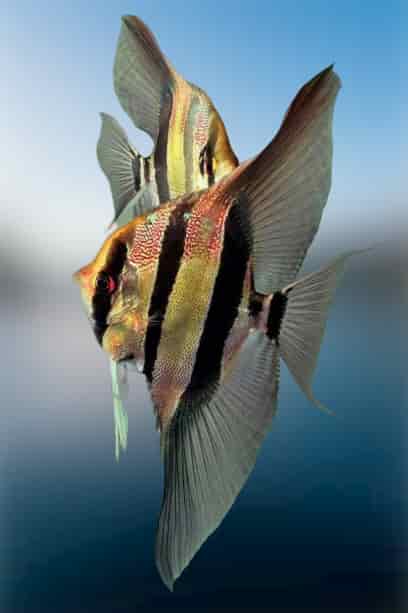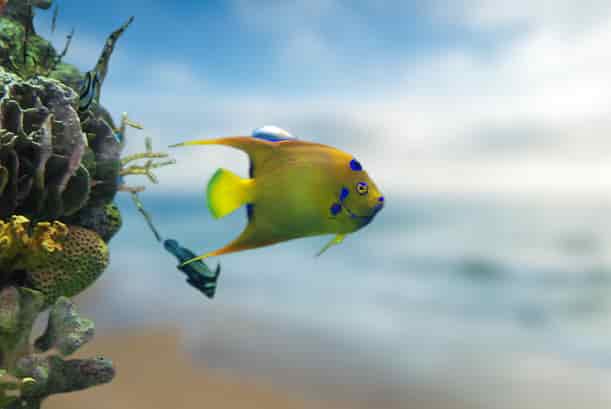Homemade dog treats recipes
Like us, our pet deserves a treat from time to time,
especially during his birthday. Some dog parents don't celebrate this special
occasion while some go all out, even hosting a small party for their dog. While
your dog's birthday
Birthday cake recipes for dogs
This year, make your fur baby's birthday an eventful one
with these easy birthday cake recipes for dogs:
Dog Peanut Butter and Pumpkin Cake
What you need:
1 egg
1 cup flour
2/3 cup pure pumpkin puree (never use pumpkin pie mix)
1/2 cup water
1/3 cup peanut butter (natural or low sugar)
1/3 cup vegetable oil
1/2 teaspoon baking soda
For the frosting:
2/3 cup pumpkin puree
2 tablespoons cream cheese
Whisk together egg, flour, pumpkin puree, water, peanut
butter, vegetable oil in a bowl. Pour batter in a greased and floured round or
loaf pan. Bake in a pre-heated oven (350F) for 15 to 20 minutes. Cool
completely. Meanwhile, mix together is cooled
Honey-Coco Cake For Doggies
What you need:
3 eggs
1 3/4 cup all-purpose flour
3 tablespoons refined coconut oil, melted
2 tablespoons honey
Plain yogurt (for frosting)
Whisk together eggs, coconut oil, and honey. Slowly add flour
to the mixture until well-blended with the rest. Transfer mixture to a greased pan
and bake for 15 to 20 minutes in a pre-heated oven (350F). Cool completely before
frosting with yogurt.
Triple Apple Doggy Birthday Cake
What you need:
2 eggs
1 cup whole wheat flour
1/2 cup unsweetened applesauce
1/4 cup dried apple rings, finely diced
1/4 cup peeled and finely diced Granny Smith apple
1/8 cup milk
2 teaspoons cinnamon
1 teaspoon baking soda
Combine flour, cinnamon and baking soda in a bowl. Add dried
apple rings and coat with mixture. In a separate bowl, mix together
Your pet's birthday will be made
Here are the more three most healthy and delicious homemade dog treats recipes for dogs:
What you need:
2 eggs
1 carrot, peeled and shredded
1 zucchini, shredded
3 cups whole wheat flour
1 cup chopped baby spinach
1 cup pumpkin puree
1/2 cup old-fashioned oats
1/4 cup peanut butter
In an electric mixer bowl, beat together eggs, pumpkin puree,
and peanut butter for 1 to 2 minutes on high until well-combined. Lower speed
and gradually add 2 1/2 cups whole wheat flour and old-fashioned oats. Slowly
add the remaining flour until dough is no longer sticky. Stir in carrot,
zucchini and baby spinach. Roll out dough to 1/4-inch thickness on a floured
surface. Cut out desired shapes using cookie cutters and place on a baking
sheet lined with parchment paper. Bake on a pre-heated oven (350F) for 20 to 25
minutes. Cool completely.
Dog Pumpkin and Sweet Potato Bites is one of the healthy and tasty homemade dog treats.
What you need:
1 egg
1 1/2 cups brown rice flour
1 cup mashed sweet potato
1/2 cup pure pumpkin puree
1/2 cup water
2 tablespoons pure organic maple syrup
Combine egg, brown rice flour, sweet potato, pumpkin puree,
water and maple syrup in a large bowl. Stir until ingredients are well-combined
and form a thick batter/dough. Pinch off pieces of the dough and roll into
small balls. Place the balls 1 inch apart on 2 baking sheets lined with
parchment paper. Flatten each ball to 1/4-inch thickness using a fork and bake
in a pre-heated oven (350F) for 20 minutes. Flip then bake for 10 minutes more.
Cool completely and place in the freezer for up to a month.
Homemade dog treats recipe of Carrot, Oat, and Applesauce Dog Treats
What you need:
1 large carrot, finely grated
1/2 cup all-purpose flour
1/2 cup quick oats
1/2 cup unsweetened applesauce
Mix together
Ensure that your dog is snacking right with these healthy
and delicious snack recipes for dogs!
A lot of dog parents choose to simply you are not required
Bacon-Flavored Doggie Biscuits
What you need:
2 eggs
5 cups whole wheat flour
1 cup milk
1/2 cup water
10 tablespoons bacon fat, melted
1 teaspoon salt
In a large mixing bowl, beat the eggs, then stir in milk,
water and bacon fat. Season with salt. Carefully add the whole wheat flour to
make the dough stiff. Once desired stiffness is achieved
Delicious Meat Cake For Dogs (and Humans)
What you need:
2 1/2 kilograms ground beef
8 eggs
4 carrots, grated
2 potatoes, grated
2 celery stalks, chopped
3 cups of water
1 1/2 cups regular rolled oats
1 1/2 cups brown rice, cooked
1/4 cup olive oil
1 dash salt
Mix together
Microwave Dog Donuts
What you need:
1 egg
2 cups whole wheat flour
2/3 cup beef broth
3 tablespoons quick-cooking oats
In a large mixing bowl, whisk together egg and beef broth.
Add whole wheat flour and quick-cooking oats to stiffen the dough. Roll out the
dough on a floured surface into a 1/2-inch thickness. Use a round cookie cutter
to cut out the shape and a smaller one to cut out the center hole. Arrange donuts
in a greased microwave-safe plate and cook on high on a microwave for 10
minutes. Repeat steps until all of the dough are cooked
Making your own snacks and sweet treats for your pooch has
plenty of benefits. One is that you are in control of the ingredients that are
used age
Here are some doggie dessert recipes that your furry friend
will surely enjoy:
Dog-Friendly Peanut Butter Biscuits
What you need:
1 egg
4 squares white almond bark
2 cups whole wheat flour
1 cup crunchy peanut butter
1 cup old-fashioned oats
1/3 cup plus 1 teaspoon vegetable oil
1/3 cup water
1/4 cup honey
Sprinkles
Mix together Beat until a stiff the dough is achieved
Sunny Day Frozen Pup cakes
What you need:
1 ripe banana
1/2 cup peanut butter
1/2 cup plain greek
Splash of unsweetened almond milk
Mix together greek a couple of
Carrot Doggie Cupcakes
What you need:
1 egg
1/2 carrot, shredded
1/2 cup whole wheat flour
2 tablespoons applesauce
2 tablespoons peanut butter
2 tablespoons honey
1 tablespoon water
1/2 teaspoon vanilla extract
1/2 teaspoon baking powder
Ina large bowl, mix flour and baking powder then stir in
egg, applesauce, peanut butter, honey, water and vanilla extract until mixture
is well blended. Fold in the carrots. Fill cupcake liners with 2/3 full of the
batter and bake in a pre-heated oven (350F) for 15 to 20 minutes. Top with
plain greek
Recipe for healthy
You are a dog owner who loves their pet dog unconditionally,
so much so, you would take a bullet for the dog? This is great to hear because
there are too many people who believe they love their dog more than life
itself, but yet contradict themselves by choosing to ignore the importance of
their dog's diet. Anyone loving a dog more than life would make sure healthy
foods was implemented healthy
Not all dog owners are fully educated
Good & Bad Dog Food Tips
Don't give your dog table scraps. In today's kitchens a lot
goes on with spices and herbs for cooking meals and this isn't good for a dog's
indigestion, as is the same for some humans too. No matter how sad that puppy dog eyes look watching you eat at the table don't be tempted
Good Food
Let your dog sample a taste of yogurt and if he or she
likes it happy days because it's high in protein and calcium. Avoid yogurt
types containing sugar or artificial sweeteners. Choose plain yogurt over
flavored to help your dog if they have digestion problems.
Dogs with specific bowel problems can benefit greatly
Chicken is a good source of protein.
A dog's health will better and his coat gets shinier by
eating salmon content of omega-3 fatty acids.
Broccoli is vitamin-rich more
than
Pumpkin just like oatmeal is a great source of fiber and
offers vitamin A. Pumpkin can be given
With dog treats, you have to
Cottage cheese is high in calcium and protein. Because it's
a dairy product doesn't use it if your dog has problems digesting dairy products.
As long as your dog isn't lactose intolerant, you can try other cheeses with
lower-fat options.
Carrots are not just for rabbits. They are low in calories
and high in fiber and vitamins.
Be careful with eggs even though they are high in protein.
Too much is not good, and raw or undercooked eggs are a definite no for any dog
regardless of a breed. Consider the risk of contamination from bacteria such as
salmonella.
Bad Foods
Chocolate contains caffeine-like stimulants known as
methylxanthines. If eaten in big amounts, it can cause serious side effects
such as vomiting, diarrhea, irregular heartbeat, seizures, and even death.
Eat five a day to stay healthy they say, not in a dog's
world, especially if grapes and raisins are included
Avoid avocado leaves, fruit, and seeds because they contain
a toxin called persin as well as
For more exotic pet updates, please click here.









